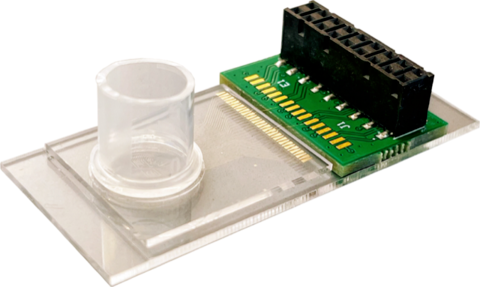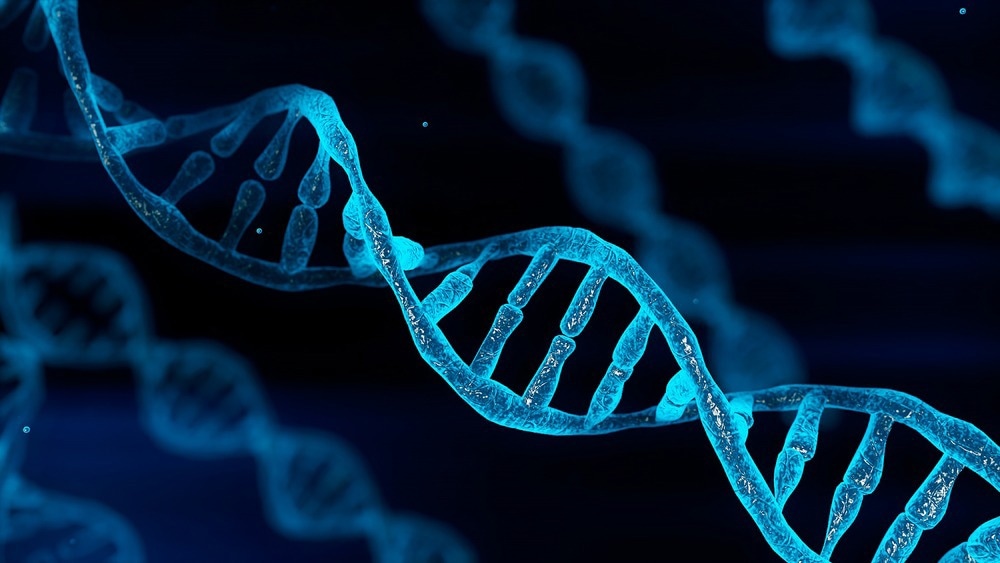Reviewed by Danielle Ellis, B.Sc.Oct 4 2023
Researchers at UMass Amherst have significantly expanded the field of biomedical engineering by developing a novel technique for extremely accurate DNA detection.
 This device detects DNA with a 100-fold greater sensitivity than traditional methods using an alternating electric current. Image Credit: University of Massachusetts Amherst
This device detects DNA with a 100-fold greater sensitivity than traditional methods using an alternating electric current. Image Credit: University of Massachusetts Amherst
DNA detection is in the center of bioengineering.”
Jinglei Ping, Study Lead Author and Assistant Professor, Mechanical and Industrial Engineering, University of Massachusetts Amherst
Ping is also an adjunct assistant professor in biomedical engineering and affiliated with the Center for Personalized Health Monitoring of the Institute for Applied Life Sciences
Ping added, “Everyone wants to detect the DNA at a low concentration with a high sensitivity. And we just developed this method to improve the sensitivity by about 100 times with no cost.”
Ping noted, “The challenge is basically finding the needle in a haystack.”
There are several molecules that can affect the outcome of a sample that is not the target DNA. This is where the new approach differs. An alternating electric field is placed around the test sample.
“We let the DNA dance. When the strands of DNA dance, they have a specific oscillation frequency. When the strands of DNA dance, they have a specific oscillation frequency,” Ping noted.

Image Credit: MiniStocker/Shutterstock.com
Then, after reading samples, scientists can determine if a molecule is moving in a manner that is consistent with the movement of the target DNA and readily separate it from other movement patterns. This is effective even in the presence of barely any target DNA.
The ramifications of this novel approach for accelerating the diagnosis of diseases are enormous. First off, because it is so sensitive, diagnoses can be made sooner in the course of a disease, which can have a significant influence on health outcomes.
Additionally, because everything is electric, this process just needs minutes instead of days, weeks, or months.
Ping stated, “This makes it suitable for point of care. Usually, we provide samples to a lab and they can provide the results quickly or slowly, depending on how fast they go, and it can take 24 hours or longer.”
He gives the example of how a biopsy sample is frozen after a diagnosis and sent to a lab for processing, which might take up to two months. Treatment does not need to wait for lab processing periods, thanks to the nearly immediate findings of this innovative technique.
Its portability is a further advantage. The gadget, which opens the door to advances in health on a worldwide scale, is described by Ping as being around the size of a blood sugar test kit.
“It can be used at places where resources are limited. I went to a country and the doctor usually goes to a village once or twice a year, and now, maybe they can have a base that has this kind of tool and they will have the chance to test for it quickly and easily,” Ping stated.
Ping is intrigued by the variety of potential uses for this discovery.
“The nano-mechanoelectrical approach can be also integrated with other bioengineering technologies, like CRISPR, to elucidate nucleic acid signaling pathways, comprehend disease mechanisms, identify novel drug targets and create personalized treatment strategies, including microRNA-targeted therapies,” Ping concluded.
On October 13th, 2023, in Seattle, Washington, Xiaoyu Zhang, a graduate research assistant from the Ping Lab, will offer an oral presentation pertinent to this study.
Source:
Journal reference:
Zhang, X., et al. (2023). Nanomechanoelectrical approach to highly sensitive and specific label-free DNA detection. Proceedings of the National Academy of Sciences. doi.org/10.1073/pnas.2306130120